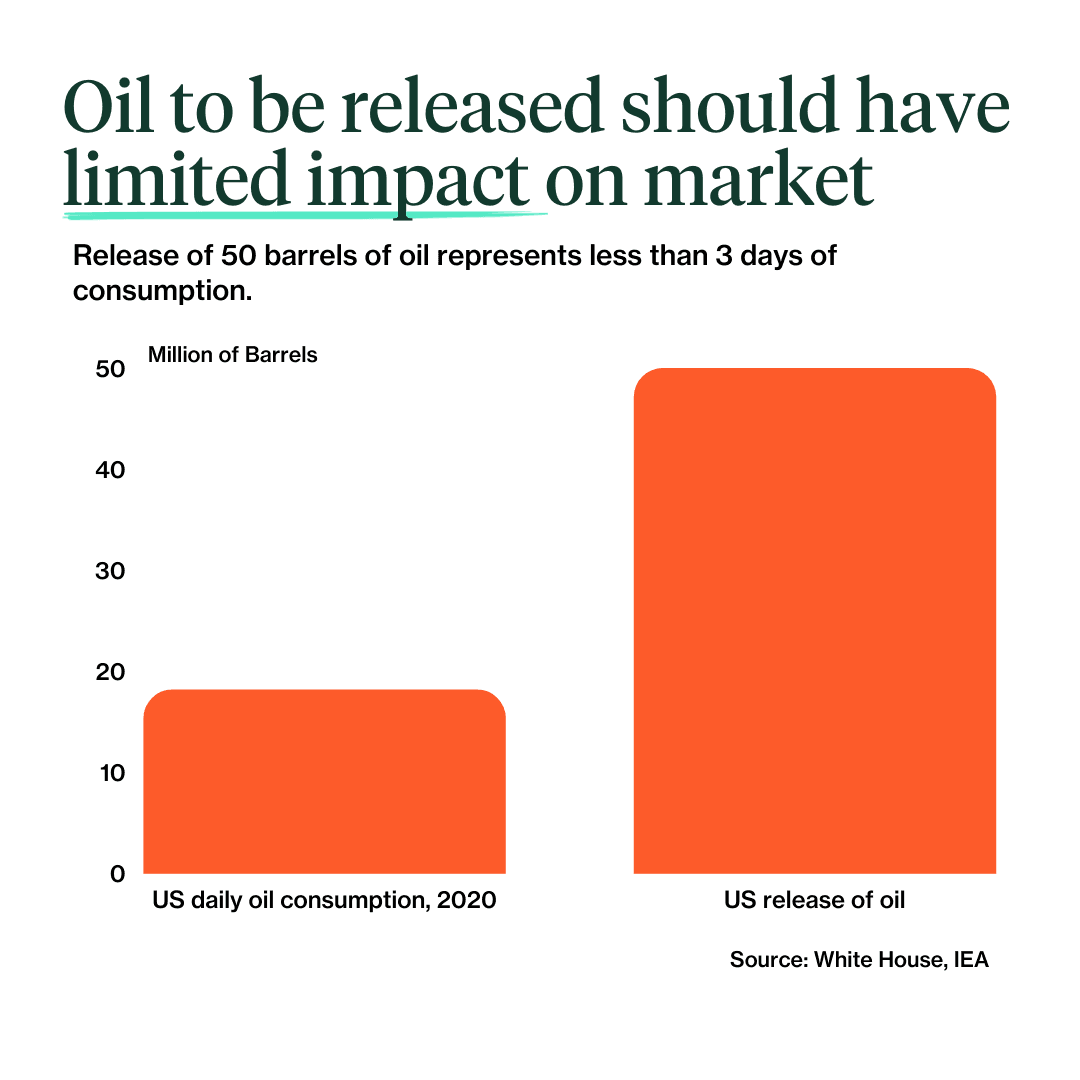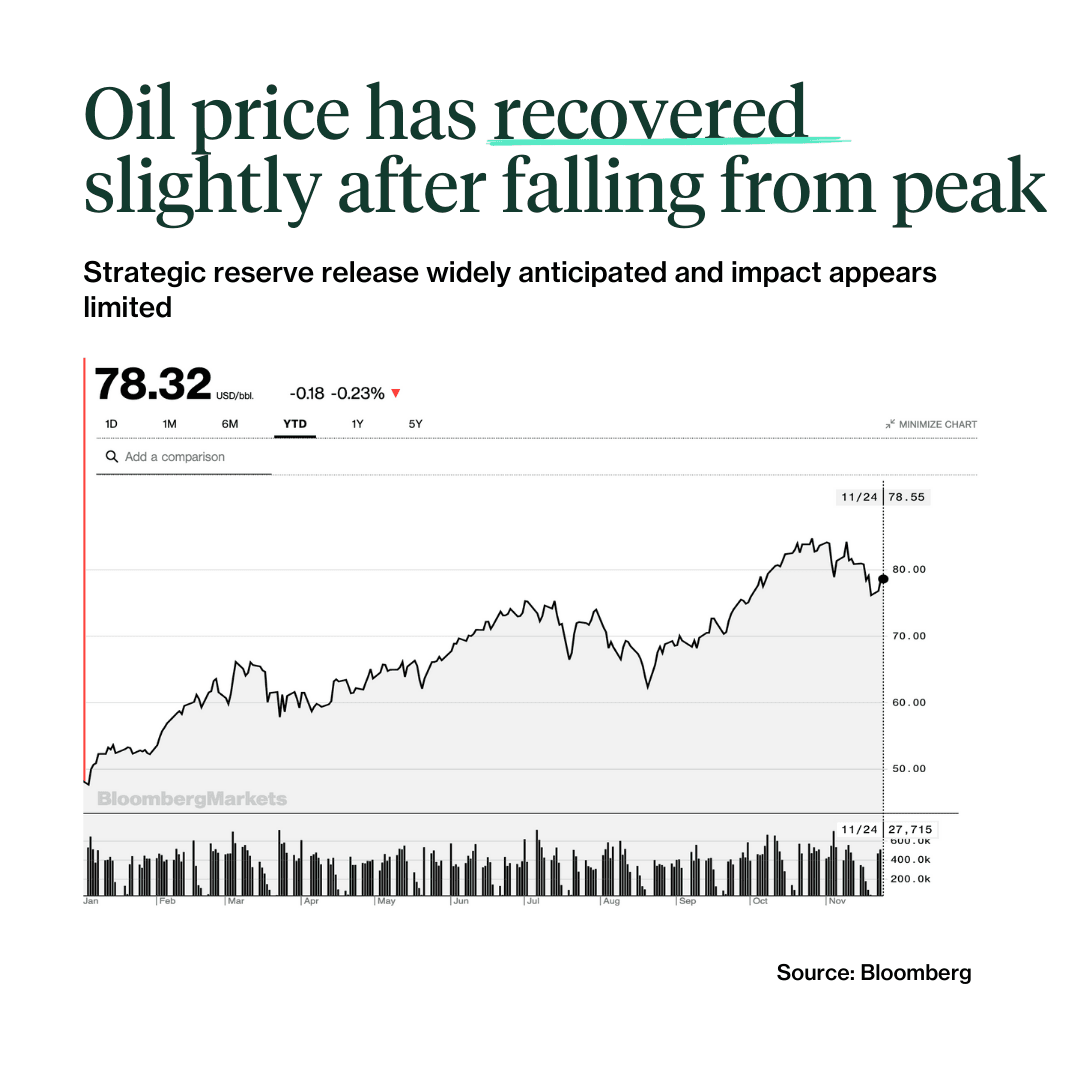What does the Strategic Petroleum Reserve release mean for oil prices?
By Beansprout • 25 Nov 2021 • 0 min read
The coordinated effort to raise oil supply appears to have limited impact.

In this article
TL;DR
- The US government announced a coordinated effort to release strategic crude reserves and bring down energy prices.
- The impact could be limited as the 50 million barrels of oil to be released by the US represents just about 2-3 days of domestic demand.
- For now, the market remains driven mainly be a recovery in demand, as well as how OPEC reacts to the coordinated release.
- It would appear that the recent oil price dip is not supported by fundamentals, and many analysts have kept their bullish view on oil prices.
What happened?
- Co-ordinated effort to release oil reserves. The US government announced a coordinated effort to release strategic crude reserves and bring down energy prices. The US will release 50 million barrels of oil, and participation by other countries including India, Japan, China, South Korea and the UK is expected to bring the total amount of oil to be released to about 65-70 million barrels.
- Widely expected move has dampened immediate impact on oil prices. Various media outlets reported potential releases from the Strategic Petroleum Reserve in recent weeks, leading to a pullback in oil prices in the past month. Following the announcement, oil prices bounced by more than 2% with the West Texas Intermediate (WTI) reaching above US$78 per barrel.
What does this mean?
- Limited impact to market. With daily oil consumption in the US at about 18 million barrels in 2020, the amount of oil released is unlikely to make a significant dent on the overall demand-supply dynamic of the market. In addition, details about the oil release plan which mentions that oil purchased must be returned in the next one to three years also led to a muted response by the market.
- Demand drivers remain key. For now, the market may be more focused on demand drivers and whether a surge in COVID-19 cases in Europe with threats of lockdowns could derail the strong global recovery.
- OPEC remains a wildcard. Another key driver to watch out for would be how the Organisation of Petroleum Exporting Countries (OPEC) reacts to the co-ordinated release. Earlier, it was reported that OPEC may adjust plans to raise oil production if the oil release goes ahead. However, with limited spare capacity amongst OPEC countries, it may not be easy to bring production back up significantly.

What would Beansprout do?
With the Strategic Petroleum Reserve release unlikely to shift the global oil demand and supply picture by much, many analysts have kept their bullish view on oil prices. Goldman Sachs has said that the recent oil price plunge is not justified by fundamentals, and has kept its forecast for Brent oil prices to average US$85 per barrel in 4Q21.
Oil also serves as a good inflation hedge, and an example of an ETF that offers exposure to oil is USO.

This article was first published on 25 November 2021 .
Read also
Gain financial insights in minutes
Subscribe to our free weekly newsletter for more insights to grow your wealth
0 comments